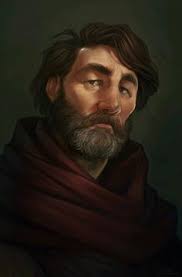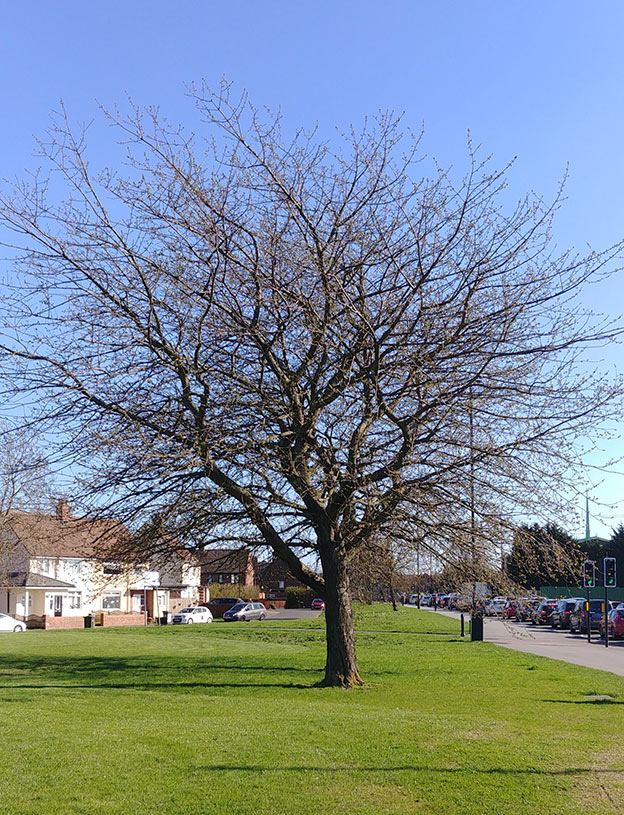Court of Peers Formal Dress
The Court of Peers
The collection of rulers, religious leaders, and craftsfolk began to consider themselves apart from the common farmers, herdsfolk, hunters, and laborers, though they were peers to one another. To embody this belief, they named themselves "the Peerage", and when they gather formally, they refer to "assembling the Court of Peers". In early days, there were few Peers, and it was easy for them to know each other's names, skills and rank. But as the Kingdom grew, this became more difficult. And so, for the times when the entire Peerage gathers, they devised a dress code that identifies their titles, positions, and ranks in the Order of Precedence. For formal celebrations or mourning, to deliberate a serious matter, or to hear the criminal trial of one of their number, they don this garb which reminds them, and the population of commoners, of their common purpose. Their robes, even in their variety, remind all of their equality and interdependence upon one another as they guide all aspects of kingdom life.The Formal Dress of the Peerage
The clothing worn by every member of the peerage are, except for tailoring adjustments to suit individual body shapes, identical in cut and form. It is in the colors used to dye the fabrics and the decorative trim and appliques added to the basic outfit components that distinction of rank and function are shown.The outfit consists primarily of a robe made of heavy, layered linen that is styled to resemble a coat over tunic, although it is a single garment. It features loose sleeves that end partially cuffed and partially free-hanging. A high, stiff open collar extends around the head of the wearer. The front has the appearance of narrow lapels open around an undertunic, but as mentioned, it is all part of the same garment. Below the waist, a central panel hangs free from the waist with tassels affixed to the bottom. The sides flares into long coattails with tassels affixed along the back portion only.
Trousers are worn beneath the robe for modesty, and calf-high boots with heels are worn on the feet.
There are various trimmed edges, and an applique pattern is applied to the upper arm area of each sleeve. Finally, a chest device is affixed to the front below the neckline. In general, the main body of the garment will be of a single color, while the trim, tassels, cuffs, and appliques will be of a different color to denote title and rank. The chains and chestpiece are always metal, but choice of metal depends on rank.
The following sections will describe the individual robes for each rank in the Peerage. The robes are grouped by similarity of function; the order in which they are presented here is not representative of their place in the Order of Precedence, which clearly defines their relative ranks of importance.
The Royal Family
The Royal Family, consisting of the High Sovereign, any Sovereign Consorts, and Principal Children are the only persons entitled to wear any sort of clothing fashioned with the unique purple dye extracted from river mollusk shells within the kingdom. The bodies of their Peerage Robes are dyed with this purple. All are trimmed with Cloth of Gold. The High Sovereign is identified by the chains and chestpiece of gold, while those of the consorts are of silver, and the Principals are of copper. Black trousers, and highly polished black boots complete the outfits.Governing Nobility
There are six ranks of active governing titles within the Peerage: The Archdukes oversee all. The Marklords, Earls, and Barons oversee the bulk of the lands, while the High Lords Mayor govern cities and Lords Mayor govern towns. The robes for all of these are dyed a deep, rich blue color, which marks them all as active administrators within the Kingdom. The robes of the Archdukes are trimmed and tasseled with the same blue, and adorned with silver chains and chestpiece. Those of Marklords, Earls, and High Lords Mayor - all of whom report to Archdukes - are trimmed and tasseled with a light, contrasting blue. The Marklords are chained and chestpieced in gold; the Earls in silver, and the High Lords Mayor in copper. Finally, the Barons and Lords Mayor, who report to either Marklords or Earls, are trimmed in black. The Baron's chains and chestpieces are silver, while those of the Lords Mayor are copper. Black trousers, and highly polished black boots complete the outfits.Retired Administrators and Honorees
Archdukes, Marklords, Earls, and Barons are not guaranteed to serve for life, but they are guaranteed places in the Peerage once they have achieved these ranks. When an Archduke is honorably deposed from the position, the title of Duke is taken in retirement. Honorably deposed Marklords and Earls are granted Viscount titles, and honorably discharged Barons assume the title of Baronet. Additionally, the High Sovereign may from time to time bestow one of these three titles upon an individual that has performed some admirable service for the Kingdom. To denote the fact that the holders of these ranks are no longer actively administering the affairs of the Kingdom, the robes are primarily black in color rather than deep blue. The trim, tassels, and chains are the same as they were for the original administering rank. The chains and chestpieces are all of silver. Black trousers, and highly polished black boots complete the outfits.The True Church Hierarchy
The Religious Hierarchy of the True Church of Humanity - the State Religion of the Kingdom - is also included within the Peerage. All of its ordained ranks appear within the Order of Precedence, interspersed among the administrators. For religious purposes, all of these add a head covering to the basic outfit.The leader, or First Servant of the True Church, is distinguishable by robes primarily of golden yellow-colored cloth (but not cloth-of-gold), and pure white trim and tassels. Chains and chestpiece are of gold. The headgear is a hood with stiffened edges to overhang the face without covering the eyes. The hood affixes outside the collar of the robe. Archprelates, Prelates, and Pastors - the remaining managerial as well as preaching ranks within the church - all wear robes of primarily red color. Archbishops are trimmed in gold, Bishops in Silver, and Pastors in black. Archbishops wear chains and chestpieces of gold, Bishops of silver, and Pastors of steel. Finally, the Servants of the True Church, the ordained priests that assist Pastors, wear a darker red robe with black trim, and black iron chains and chestpieces. Archbishops and bishops wear hoods similar to that of the First Servant, appropriately colored and trimmed. Pastors and Servant Priests do not wear hoods; instead they wear black, wide-brimmed hats to protect them from the sun in their travels. The First Servant's trousers are white, and boots are yellow-dyed leather. The trousers of the rest of the clergy are dyed to match their robes; their boots are all polished black.
Guild Grandmasters and Masters
The third leg of the triumvirate of professions that make up the peerage are the skilled artisans that have risen to the top of their respective professions. Artisans in the Kingdom are strictly organized into Guilds, and standards of quality within the guilds are maintained by those who have demonstrated the highest levels of expertise. As craftsfolk learn a trade and refine their skills, they rise through the ranks of the guild. The highest two levels of achievement in the guild - the two levels from which guild leaders are drawn - are the guild Masters and Grandmasters. In addition to any guild rewards, these highest achievers are also granted positions within the Peerage.The robes of all artisinal craftsfolk in the Peerage are the same deep green in base color. But unlike the administrators and clergy who use trim of the robe to designate relative rank, for the craftsfolk, the robe's trim is used to denote which particular trade they belong to. Trim, cuffs, appliques, and tassels all take a color representing a particular trade: red for the metalsmiths, green for the woodsmiths, yellow for the lorekeepers, orange for the clothsmiths, and blue for the culinarians. Also, since most craftsmen wear a head covering while actually working (usually to protect either themselves or their work), the formal robes include a simple cloth hat; the hats are also colored to reflect the specific guild of the wearer. Finally, it is the chains and chestpieces that denote relative rank, with gold for grandmasters and silver for masters. Craftsmen of all guilds wear brown-dyed trousers, and wear suede-like brown boots.
Occasions for Formal Dress
The formal dress gowns described here are clearly not intended for everyday use. While the clergy members may - and many do - wear these robes regularly, it should be obvious that the artisans could not if they were still practicing their crafts. The robes are not comfortable for riding atop a horse for extended periods, either.There are several types of occasions when the Peerage members are expected to don their formal robes. Coronations and State Funerals (funerals of a High Sovereign, Sovereign Consort, Archduke, or Principal) are two such occasions. Weddings involving any member of the Peerage, if they include a large ceremony with large guest lists, are informally considered another time to wear the formal attire. The final situation is when the members of the Peerage are called to sit in judgement of one of their number who has been accused of a high crime. When this occurs, the entire Court of Peers, as it it called, convenes in one of the three cities of the kingdom to hear the case and pass judgement and sentence upon their peer. The solemnity of this occasion calls for the reminders of their unity and purpose which the design of the robes provides.














































The many different colors and their meanings in rank is wonderfully worked out.
PANGORIO
andHYPNOSIUM